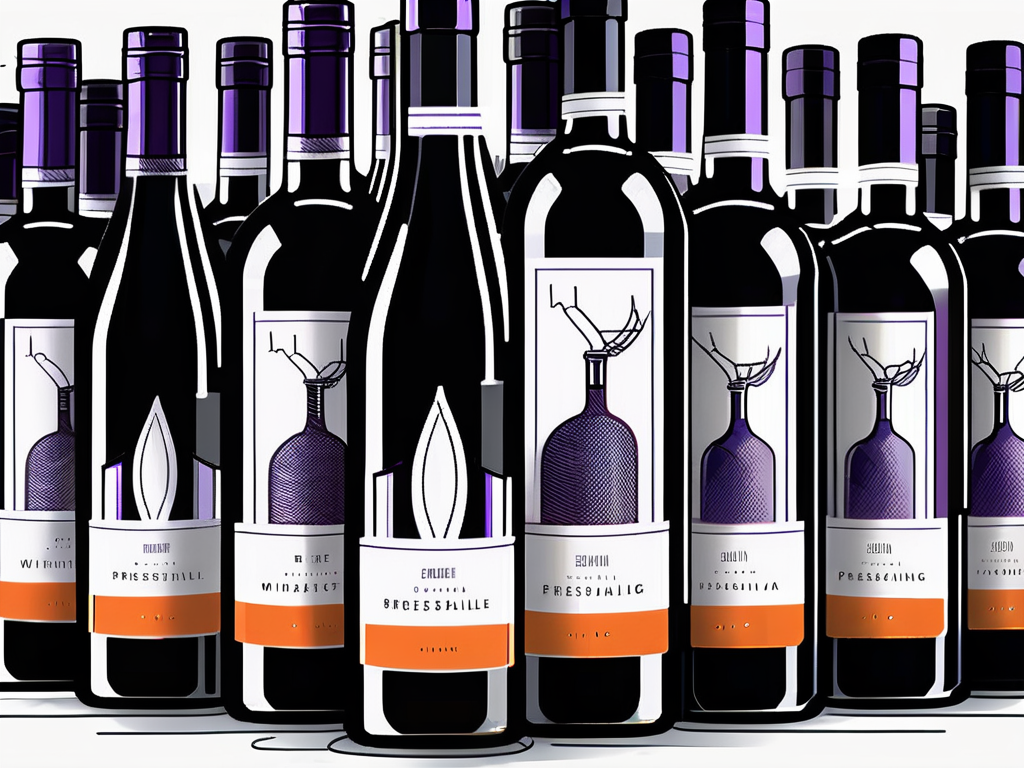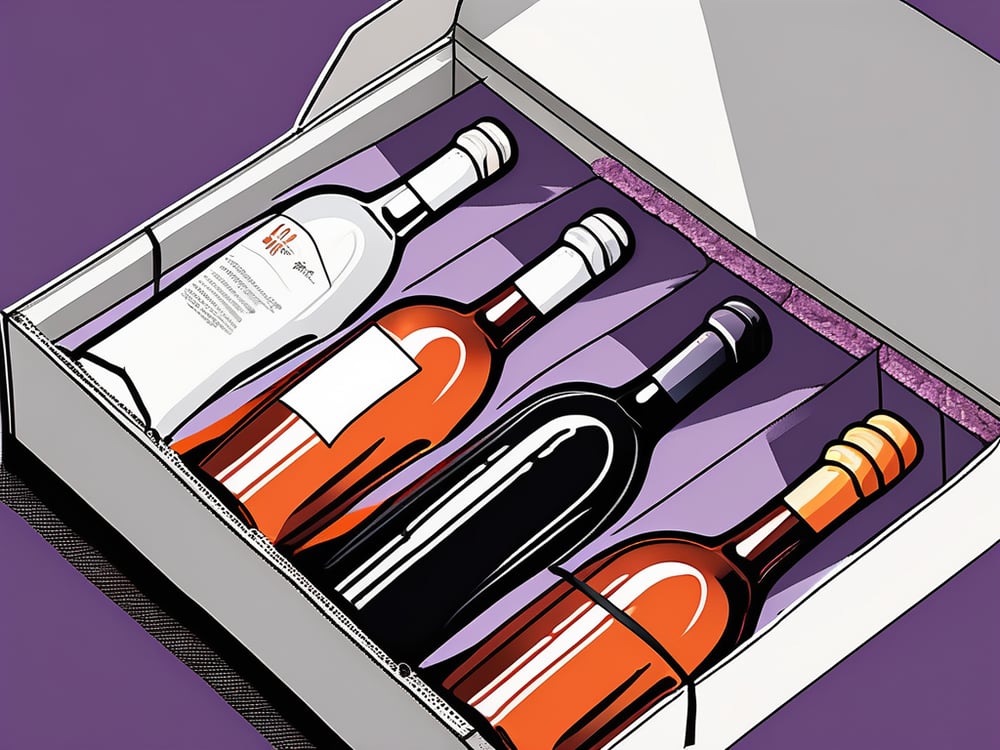Did you know that the global wine market is expected to reach a whopping $543 billion by 2023? That’s a lot of bottles of wine being shipped around the world!
Whether you’re a wine connoisseur sending a bottle as a gift or a winery shipping out cases of your finest vintage, it’s crucial to package your wine properly for shipping and thus ensure it arrives at its destination in perfect condition.
In this comprehensive guide, we will present:
- Efficient ways to package wine
- The importance of proper wine packaging
- Essential materials for wine packaging
- Special considerations for shipping different types of wine
- Ways of navigating shipping regulations and restrictions
Table of Contents
ToggleEssential Steps to Package Wine for Shipping Like a Pro
To ensure safe shipping, individually wrap each wine bottle in bubble wrap, secure them in a sturdy, corrugated box with dividers, fill any remaining space with packing materials, and seal and label the box as ‘Fragile.’ Here’s a more detailed way of doing it:
Step 1: Prepare the Wine Bottle for Packaging Carefully
Before placing the wine bottle in the shipping box, ensure that the bottle is clean and dry. Remove any existing labels or marks that could cause confusion or cover important information.
It’s also a good idea to check the seal and ensure it’s intact to prevent leakage. Remember, a clean bottle not only looks more professional but also reduces the risk of any contamination during transit.
Additionally, if you’re shipping a particularly rare or valuable bottle of wine, consider wrapping the bottle in bubble wrap for an extra layer of protection. This will help cushion the bottle and provide insulation against any sudden impacts that may occur during shipping.
Step 2: Secure the Wine Bottle in the Box
Once the wine bottle is ready, gently place it in the shipping box. Add cushioning materials such as crumpled paper or air-filled packing bags around the bottle to ensure a snug fit and minimize movement.
Remember, you want the bottle to be immobilized to prevent any potential damage during transit. It’s also a good idea to place the bottle in the center of the box, away from the sides, to provide an extra buffer zone against external forces.
For added security, consider using dividers within the box to create individual compartments for each bottle if you’re shipping multiple bottles in the same package. This will prevent them from knocking into each other and potentially causing breakage.
Step 3: Double-Check Everything and Add an Additional Layer for Extra Safety
After securing the wine bottle, double-check that everything is in place. Seal the box with strong packaging tape and affix any required shipping labels or documentation.
It’s always a good idea to add an additional layer of protection by placing the sealed box inside a larger outer box, especially for delicate or valuable shipments. This outer box acts as a buffer zone, providing further insulation and protection against rough handling during transit.
Remember to clearly label the package as fragile to alert handlers to exercise caution when moving the box. This simple step can make a significant difference in how your package is handled throughout its journey to its destination.
Understanding How Important Proper Wine Packaging Really Is
When it comes to shipping wine, proper packaging is everything. Not only does it protect the bottles from damage, but it also helps maintain the quality of the wine and prevents leakage or breakage during transit.
The last thing you want is a disappointed customer receiving a broken bottle or a spoiled vintage due to improper packaging.

Proper wine packaging goes beyond just placing a bottle in a box and sealing it shut. It involves careful consideration of the materials used, the design of the packaging, and the techniques employed to secure the bottles in place. Each element plays a crucial role in ensuring that the wine reaches its destination unharmed and ready to be enjoyed.
The Risks of Improper Wine Packaging
Shipping wine without the right packaging can lead to a multitude of problems. Exposure to extreme temperatures, excessive agitation, and improper padding can result in cracked bottles, damaged labels, and, worst of all, spoiled wine.
Imagine the disappointment of opening a package only to find your favorite wine-stained and unfit for consumption!
Furthermore, improper packaging can also have legal implications, especially when shipping wine across state or international borders.
Failure to comply with packaging regulations and standards can result in fines, delays in delivery, and even the confiscation of the shipment. It is essential for wine producers and sellers to stay informed about the packaging requirements in different regions to avoid any legal issues.
The Benefits of Proper Wine Packaging
On the other hand, using the proper packaging materials and techniques will help protect your precious cargo, ensuring that each bottle arrives in the same condition as when it left your winery.
Proper packaging not only safeguards your investment but also enhances your reputation as a trusted wine producer or seller.
Moreover, investing in high-quality packaging reflects your commitment to customer satisfaction and attention to detail. It shows that you value not only the product inside the bottle but also the entire experience of receiving and enjoying your wine.
By prioritizing proper packaging, you demonstrate professionalism and care for your customers, building loyalty and trust in your brand.
Essential Materials for Wine Packaging
Now that you understand the importance of proper wine packaging, let’s dive into the essential materials you’ll need to get the job done right.
Ensuring that your wine bottles reach their destination safely and in pristine condition requires careful consideration of the packaging materials used. From the outer shipping box to the inner protective layers, each component plays a crucial role in safeguarding your precious cargo.
Choosing the Right Wine Shipping Boxes
When it comes to shipping wine, not just any box will do. You need sturdy, specially designed-wine shipping boxes that provide a snug fit for the bottles and offer ample protection.
Look for boxes made from strong corrugated cardboard with dividers to keep the bottles separated and secure during transit.
Opting for wine shipping boxes with built-in shock-absorbing features can further enhance the protection level. These innovative boxes are designed to withstand impacts and sudden movements, ensuring that your wine bottles remain intact throughout the journey.
Importance of Protective Inner Packaging
In addition to the shipping box, you’ll also need protective inner packaging materials such as bubble wrap or Styrofoam inserts. These materials will provide an extra layer of protection against shocks and vibrations during transit, minimizing the risk of breakage.
Choosing the right combination of inner packaging materials is key to securing the wine bottles within the shipping box.
Bubble wrap, with its cushioning properties, is ideal for wrapping individual bottles to prevent them from knocking against each other. Styrofoam inserts, on the other hand, offer a custom-fit solution for keeping bottles snug and stationary within the box.
Special Considerations for Shipping Different Types of Wine
While the basic packaging guidelines apply to most wines, there are some special considerations when shipping certain types of wine.
When it comes to shipping wine, understanding the unique characteristics of different types of wine is crucial to ensure their safe arrival at their destination. Proper packaging is essential to maintain the quality and taste of the wine throughout its journey.
Packaging Red Wine vs. White Wine
Red wines generally have a higher tolerance for temperature fluctuations, but it’s still important to protect them from extreme heat or cold.
White wines, on the other hand, are more delicate and can easily be damaged by extreme heat. Always take into account the specific requirements of each wine type when packaging for shipping.
Additionally, it’s advisable to consider the origin of the wine when determining the packaging method. Wines from cooler regions may require different insulation techniques compared to wines from warmer climates to ensure they maintain their optimal flavor profile.
Packaging Vintage Wines
Vintage wines are often valuable and require extra care during shipping. Consider using wooden wine boxes or special wine crates to provide additional protection and insulation for these precious bottles.
Furthermore, when shipping vintage wines, it’s essential to communicate with the recipient about the delivery date to ensure someone is available to receive the package.
This helps prevent the wine from being exposed to unfavorable conditions for an extended period, safeguarding its quality and integrity.
Navigating Shipping Regulations and Restrictions
Before sending your package off, it’s crucial to familiarize yourself with the shipping regulations and restrictions in your region. Ensuring compliance with these guidelines can help prevent any unexpected issues or delays in the delivery of your goods.
When it comes to shipping sensitive items such as electronics or perishable goods like food, understanding the packaging requirements is essential. Proper packaging not only protects your items during transit but also ensures they arrive in good condition at their destination.
Understanding Domestic Shipping Laws
Every country and even different states or provinces within a country may have its own set of rules when it comes to shipping alcohol.
Make sure you’re aware of any age restrictions, licensing requirements, or shipping limitations before sending your wine on its journey. It’s also important to consider the environmental impact of your shipping choices and opt for eco-friendly packaging whenever possible.
International Wine Shipping: What You Need to Know
Shipping wine internationally comes with its own set of challenges. From customs clearance to import duties and taxes, there are various considerations to take into account.
Research the specific requirements of the destination country to avoid any complications or delays. Additionally, consider investing in shipment tracking services to monitor the progress of your package and ensure its safe arrival.
Ensure Safe and Successful Shipping with Our Must-Know Tips
Properly packaging wine for shipping is essential to ensure the bottles arrive intact and the wine stays in perfect condition. By understanding the risks of improper packaging, selecting the right materials, and following the step-by-step guide, you can confidently ship your wine anywhere in the world.
Remember to also consider any special requirements for different types of wine and stay informed about shipping regulations and restrictions. Cheers to safe and successful wine shipments!






